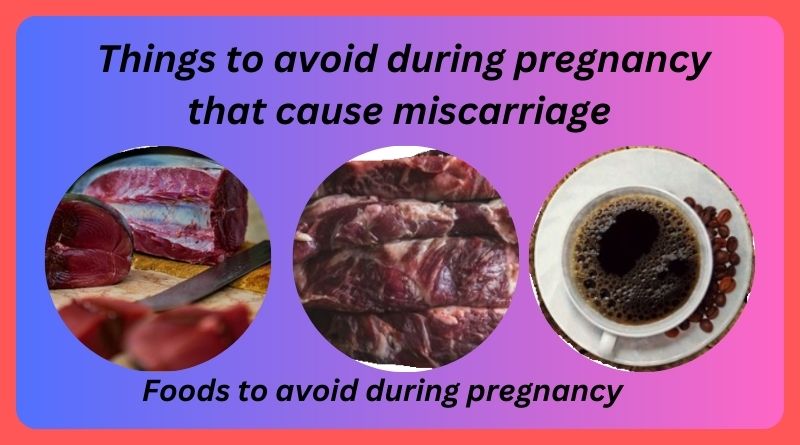Main High-Risk Pregnancy: Complications, Causes, Prevention
What does high risk mean in pregnancy? is a that puts the health and life of the mother or fetus at risk. It requires specialized care for each mom and the fetus. Some pregnancies turn out to be high-risk as they progress, whilst some females are at improved threat for problems even earlier than they come to be pregnant, for a range of reasons.
Pregnancy is considered high-risk if the patient or the baby has an increased chance of having a health problem. The word high risk may cause the pregnant woman to fear. The word high risk can be such as growth retardation, premature delivery, or problems with the placenta. However, it does not mean that high risks have problems for both the pregnant woman and the baby.
A high-risk pregnancy is the occurrence of an obstetric, fetal, or maternal risk at the beginning of pregnancy, during pregnancy, or at the time of delivery.
What is a high-risk pregnancy?
Or, what does high risk mean in pregnancy:
A high-risk pregnancy has a greater chance of complications, both from the point of view of the mother and the baby, and, therefore, prior control during pregnancy, delivery, and the postpartum duration should be extra complete, keeping off any viable risk.
Only 10% of pregnancies are considered high-risk, although there is no unanimous agreement on which ones should be considered as such since the causes that cause a high-risk pregnancy are highly variable and can occur before, during, or after pregnancy.
The term refers to medical, social, gynecological, or obstetric circumstances that may jeopardize the health of the mother, the baby, or both, with a higher probability than that of the general population during pregnancy, childbirth, or the puerperium.
How is a high-risk pregnancy detected?
Signs that pregnancy poses a greater risk to the health of the mother or baby can be detected in two ways: Ideally, in the preconception consultation (prior to the search for pregnancy), or the first visit as a pregnant woman.
The gynecologist must know the complete medical history of the woman and will ask her the medical tests and questions aimed at discovering if it is a high-risk pregnancy. Among the usual tests are: blood tests, systematic urine tests, urine cultures or other biological samples, genetic studies, imaging tests ( ultrasounds, magnetic resonance imaging ), or others, such as laparoscopy.
Throughout the monitoring of the pregnancy, medical problems may arise that identify it as a high-risk pregnancy.
Is there any risk due to the age of the woman?
Yes, from the age of 35. At ages older than 34 years, the risk of abnormalities in the number of chromosomes begins to increase, such as Down syndrome (which has three chromosomes 21), among others. However, there is also a risk after the father’s age is 35 years. What happens is that abnormalities related to paternal age are much less frequent than those related to maternal age. That is why the risk of the father’s age is less well known.
Main high-risk pregnancy
Main idea: what does high risk mean in pregnancy-
Approximately 70% of the obstetric population does not have risk factors, so its control is simple and does not require high-cost infrastructure. However, there are perinatal problems such as prematurity, perinatal asphyxia, congenital malformations, and infections; and from the maternal point of view, obstetric hemorrhage, infections, hypertensive pregnancy syndrome, and pre-pregnancy maternal diseases, which require strategies aimed at prevention, diagnosis, and timely treatment.
Physical such as age and weight, Problems before and during pregnancy, problems during childbirth, and history such as diabetes, and sexually transmitted infections.
It is important to optimize maternal health before conception to improve perinatal outcomes. This is especially important in some groups of women, such as those with pre-pregnancy conditions who, for example, have diabetes.
Causes of high-risk pregnancy
The causes of high-risk pregnancy are very varied, but there are a number of factors associated with it, some of which are present before the woman becomes pregnant, while others develop during pregnancy.
It is important to identify them early (ideally before conception occurs) to estimate their importance and thus reduce their adverse consequences since they increase both the incidence of complications during pregnancy and the risk of the situation recurring in subsequent pregnancies.
Three large groups of risk factors or causes of high-risk pregnancy are considered:
Modifying factors, which will not necessarily cause a high-risk pregnancy but do represent an added risk:
Social background:
women under 15 years of age and over 40 years of age; extremely thin (BMI less than 17) or overweight (BMI greater than 35) women; or with an excessively low height (less than 150cm); that the patient lives far from the Health Center; an uncontrolled pregnancy or poor follow-up; that the mother has addictions (alcohol, tobacco, drugs).
Previous unfavorable obstetric history:
Recurrent miscarriages (more than two), fetal losses in previous pregnancies, malformations or congenital anomalies of the fetus, retarded intrauterine growth, and premature birth.
Complications of high-risk pregnancy
If the pregnancy is well-controlled and the doctor’s recommendations are followed, no complications should arise.
However, it must be known that the second leading cause of maternal death is problems related to pregnancy and childbirth. The main cause of infant mortality is malformations and prematurity.
Below we describe the main risk factors associated with a high-risk pregnancy and the complications derived from them: Age less than 15 years: preeclampsia, eclampsia, and low birth weight babies.
Weight less than 45 kg: low-weight babies. Age over 35 years: high blood pressure ( hypertension, preeclampsia, eclampsia), diabetes, fibroids in the uterus, and difficulties in childbirth.
Three miscarriages or more in the first three months of pregnancy
35% chance of having another, higher risk of early miscarriage if the mother is diabetic. There is also an increased risk of miscarriage if the woman has had a stillbirth between the 4th and 8th month of pregnancy, or if she had a preterm birth in a previous pregnancy.
The more preterm births she has had, the greater the risk that this will happen again in subsequent pregnancies. Having a baby weighing less than 1.5kg increases the chances of the next delivery being preterm by 50%.
A woman who has had preeclampsia or eclampsia is at greater risk of having it again, especially if she has high blood pressure when she is not pregnant.
If hypertension is first diagnosed during pregnancy, the doctor may have difficulty determining whether the cause is pregnancy or another problem, but treatment and follow-up should be instituted promptly.
A previous child with intrauterine growth retardation favors this happening again with the next one. A baby weighing more than 4.5 kg at birth indicates that the mother might have diabetes.
Read more: hair loss after pregnancy treatment and vitamins
Multiparous pregnant women (several deliveries)
have greater chances of premature delivery, bleeding at delivery, precipitous delivery, placenta previa (located close to the cervix), or in the thickness of the uterine wall.
A previous child with hemolytic disease due to Rh incompatibility: the next child is also at risk of being born with the disease, and in this case, its severity will be greater.
The bicornuate uterus or a weak cervix: late abortion (Between the 4th and 6th month).
Fibroids (benign formations) of the uterus: premature delivery, placement of the baby not cephalic, difficulties during delivery, preventing vaginal delivery, causing the placenta to be positioned abnormally, and repeated miscarriages.
Mental retardation or other hereditary disorders in the family of one of the parents increase the chances that the new baby will have the same disease. The propensity to have twins also has a hereditary component.
Teratogens (factors that can cause malformations in the baby, medical or pregnancy complications): radiation, chemicals, drugs, and infections.
Drugs: alcohol, phenytoin, folic acid blockers (triamterene, trimethoprim), lithium salts, streptomycin, tetracyclines, warfarin, etc.
Infections: herpes simplex, viral hepatitis B and C, influenza, mumps, rubella, chicken pox, syphilis, listeriosis, toxoplasmosis, Coxsackie virus, cytomegalovirus.
Tobacco: reduction in the weight of the baby (the lower the weight the older the mother is and the more she smokes), problems with the placenta, premature rupture of the membranes, premature labor, uterine infections (endometritis), malformations in the baby, sudden infant death syndrome, and deficiencies in the growth, cognitive development, or behavior of the child.
Alcohol: fetal alcohol syndrome has an incidence of 2.2 per 1,000 babies born alive, and causes growth retardation before or after delivery, facial malformations, small head, and mental retardation with abnormal development of behavior (autism, attention deficit hyperactivity disorder … ). The risk of spontaneous abortion almost doubles, as well as that of other malformations at birth.
Read more: best pregnancy sex positions and when to avoid it
Drugs and consumption of toxic substances
Anemia, infections: blood, heart valves, vascular or skin collections (abscesses) in injection sites, hepatitis B or C, lung (pneumonia), tetanus, and sexually transmitted diseases ( including AIDS -HIV ).
Babies born to women with these habits have an increased risk of developing infections transmitted by the mother, and of being born with low weight and prematurely. marijuana – produces behavioral changes in babies.
Cocaine causes bone malformations, an abnormal narrowing of some segments of the intestine, behavioral disorders (hyperactivity, uncontrollable tremors, and severe learning disorders), hypertensive crises in pregnancy, abruption placenta, or intrauterine death of the baby.
Among women who use cocaine during pregnancy, approximately one in three has a premature birth, one in five a baby with growth retardation, and 15% have an abruption placenta.
The aforementioned risks persist if cocaine use is stopped after the first trimester of pregnancy, although they will be minor and it is most likely that the growth of the fetus will be normal.
Urinary tract infection (UTI/ pyelonephritis ) or vaginal bacterial infections during pregnancy are associated with preterm labor and premature rupture of membranes.
Fever (temperature above 39ºC) in the first trimester of pregnancy increases the possibility of miscarriage, and the baby suffers anomalies in the nervous system or malformations. Having a fever at the end of pregnancy increases the risk of preterm birth.
Emergency surgery during pregnancy increases the risk of preterm delivery and teratogenicity. Many pathologies, such as appendicitis, intestinal obstruction, or gallstones are difficult to diagnose as a result of changes in the abdomen during pregnancy, so they can be detected in advanced stages and this increases the complications in their treatment.
Read more: Things to avoid during pregnancy that cause miscarriage
Prevention of high-risk pregnancy
We describe some of the factors that most frequently can cause a high-risk pregnancy, and how to prevent their appearance or treat them to avoid complications: In the case of delayed intrauterine growth in a previous pregnancy, the presence of pathologies that may cause it is investigated, such as arterial hypertension, kidney problems, excessive weight gain or loss, infections, smoking, and alcoholism.
In the case of urinary or vaginal bacterial infections, a sample of urine or secretions is evaluated at the beginning of the pregnancy to treat the problem adequately. Gestational diabetes must be controlled by measuring the glucose levels (blood sugar) of the pregnant woman between weeks 24 and 28 of pregnancy, except for history or maternal age greater than 35 years, cases in which controls are carried out from the first trimester.
Given the history of mother-infant Rh incompatibility: the blood of both parents is analyzed, with analytical and ultrasound follow-up during pregnancy and the pregnant woman is vaccinated between weeks 26 and 28.
Previous baby with genetic disorders or malformations
Genetic analysis is performed on the baby (even if deceased) and on both parents, before another pregnancy. If the woman spontaneously becomes pregnant again, ultrasound, chorionic villus sampling ( chorionic biopsy ), or amniocentesis are done to help determine the chances that the abnormalities will recur.
In the case of a pregnancy achieved through assisted reproduction techniques, it would be recommended to perform PGD ( preimplantation genetic diagnosis ) with embryo selection.
Read more: What are the exclusive benefits of breastfeeding
Conclusion:
A high-risk pregnancy is a pregnancy that places the fitness and lifestyles of the mom or fetus at risk. It requires specialized attention to both the mother and the fetus. Some pregnancies become high risk as they progress, while some women are at higher risk of complications even before becoming pregnant, for a variety of reasons.
A pregnancy is considered high risk if the patient or the baby has a higher chance of having a health problem. The word high risk could cause the pregnant woman to fear. The word high risk can be, such as failure to thrive, preterm labor, or problems with the placenta.
However, it does not mean that high risks have problems for both the pregnant woman and the baby. A high-risk pregnancy is the occurrence of an obstetric, fetal, or maternal risk at the beginning of pregnancy, during it, or at the time of delivery. This type of pregnancy requires specific care and greater follow-up.
Read more: Tips for a healthy pregnancy and safe delivery
Please subscribe to my channel and follow
YouTube


